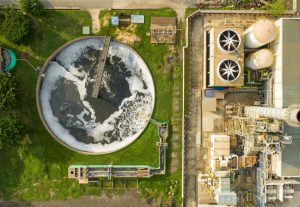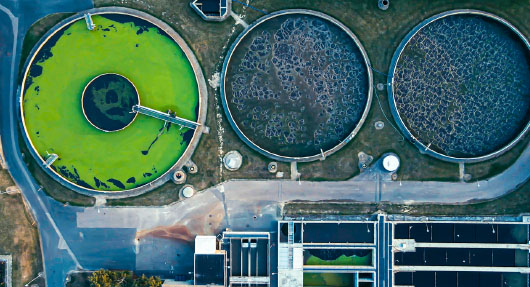Sewage Treatment Plants
The Vital Role of Sewage Treatment Plants
Safeguarding Public Health and the Environment

In our modern world, sewage treatment plants stand as silent guardians, diligently working to protect both our health and the environment. As communities grow and urbanization spreads, the importance of these facilities becomes increasingly evident. Through advanced processes and cutting-edge technology, sewage treatment plants play a pivotal role in ensuring that wastewater is purified before returning to our water bodies.
The Benefits of Sewage Treatment Plants
Beyond Clean Water – Protecting Our Future
- Environmental Protection
- Description: Sewage treatment plants are crucial in removing pollutants and contaminants from wastewater. By doing so, they prevent these harmful substances from entering rivers, lakes, and oceans, thus preserving aquatic ecosystems and biodiversity.
- Impact: Cleaner water bodies contribute to healthier aquatic life and support recreational activities like swimming and fishing.
Public Health
- Description: By treating wastewater effectively, sewage treatment plants reduce the risk of waterborne diseases. This ensures that water used for various purposes, including irrigation and recreation, is safe for human contact.
- Impact: Improved public health outcomes and reduced healthcare costs related to waterborne illnesses.
Resource Recovery
- Description: Modern sewage treatment plants are not just about waste removal; they also focus on resource recovery. This includes recycling water for industrial and agricultural use, recovering nutrients like phosphorus and nitrogen for fertilizers, and capturing methane for energy production.
- Impact: Sustainable practices that support a circular economy and reduce the strain on natural resources.
Inside the Sewage Treatment Process
How Technology Transforms Wastewater into Safe Water
Primary Treatment
- Description: The first stage involves screening and sedimentation. Large solids, such as debris and grit, are removed through screening. The wastewater then enters sedimentation tanks where heavier particles settle to the bottom.
- Key Technologies: Screens, grit chambers, and sedimentation tanks.
- Impact: This stage significantly reduces the solid content of the wastewater, making subsequent treatments more efficient.
Secondary Treatment
- Description: In this biological process, microorganisms break down organic matter in the wastewater. This is typically achieved through aeration, where air is pumped into the tanks to support microbial activity.
- Key Technologies: Activated sludge systems, trickling filters, and aeration tanks.
- Impact: This stage removes the majority of organic pollutants, resulting in cleaner water that is safe for further treatment or discharge.
Tertiary Treatment
- Description: The final treatment stage focuses on polishing the water to remove any remaining contaminants, including nutrients, pathogens, and fine particles. This can involve advanced filtration, chemical treatment, and disinfection.
- Key Technologies: Membrane filtration, UV disinfection, chlorination, and chemical precipitation.
- Impact: Produces high-quality effluent that can be safely discharged into natural water bodies or reused for non-potable applications.

Pioneering Efficiency and Innovation in Sewage Treatment
Leading the Way with Advanced Technologies
Advanced Treatment Methods
- Description: Our sewage treatment plants utilize cutting-edge technologies to enhance the efficiency and effectiveness of wastewater treatment. This includes membrane bioreactors (MBRs) which combine biological treatment and membrane filtration in a single process, ensuring high-quality effluent.
- Key Technologies: Membrane bioreactors, advanced oxidation processes (AOPs), and anaerobic digestion.
- Impact: These methods significantly improve the removal of contaminants and support higher levels of water reuse.
Energy Efficiency
- Description: We are committed to reducing the energy footprint of our treatment processes. By integrating energy-efficient equipment and optimizing operational practices, we ensure that our plants operate sustainably.
- Key Technologies: Variable frequency drives (VFDs), high-efficiency pumps, and energy recovery systems.
- Impact: Lower energy consumption leads to reduced operational costs and minimized environmental impact.
Smart Monitoring and Control Systems
- Description: Our facilities are equipped with advanced monitoring and control systems that use real-time data to optimize the treatment process. These systems enhance operational efficiency and ensure regulatory compliance.
- Key Technologies: SCADA (Supervisory Control and Data Acquisition), IoT sensors, and AI-based predictive analytics.
- Impact: Improved process control leads to consistent treatment quality, reduced maintenance needs, and timely response to potential issues.
Sustainability Initiatives
- Description: We are at the forefront of sustainability in sewage treatment, exploring innovative ways to minimize waste and maximize resource recovery. This includes capturing biogas from sludge digestion to generate renewable energy.
- Key Technologies: Biogas digesters, nutrient recovery systems, and water recycling units.
- Impact: Our sustainability efforts contribute to a circular economy, reduce greenhouse gas emissions, and promote environmental stewardship.

